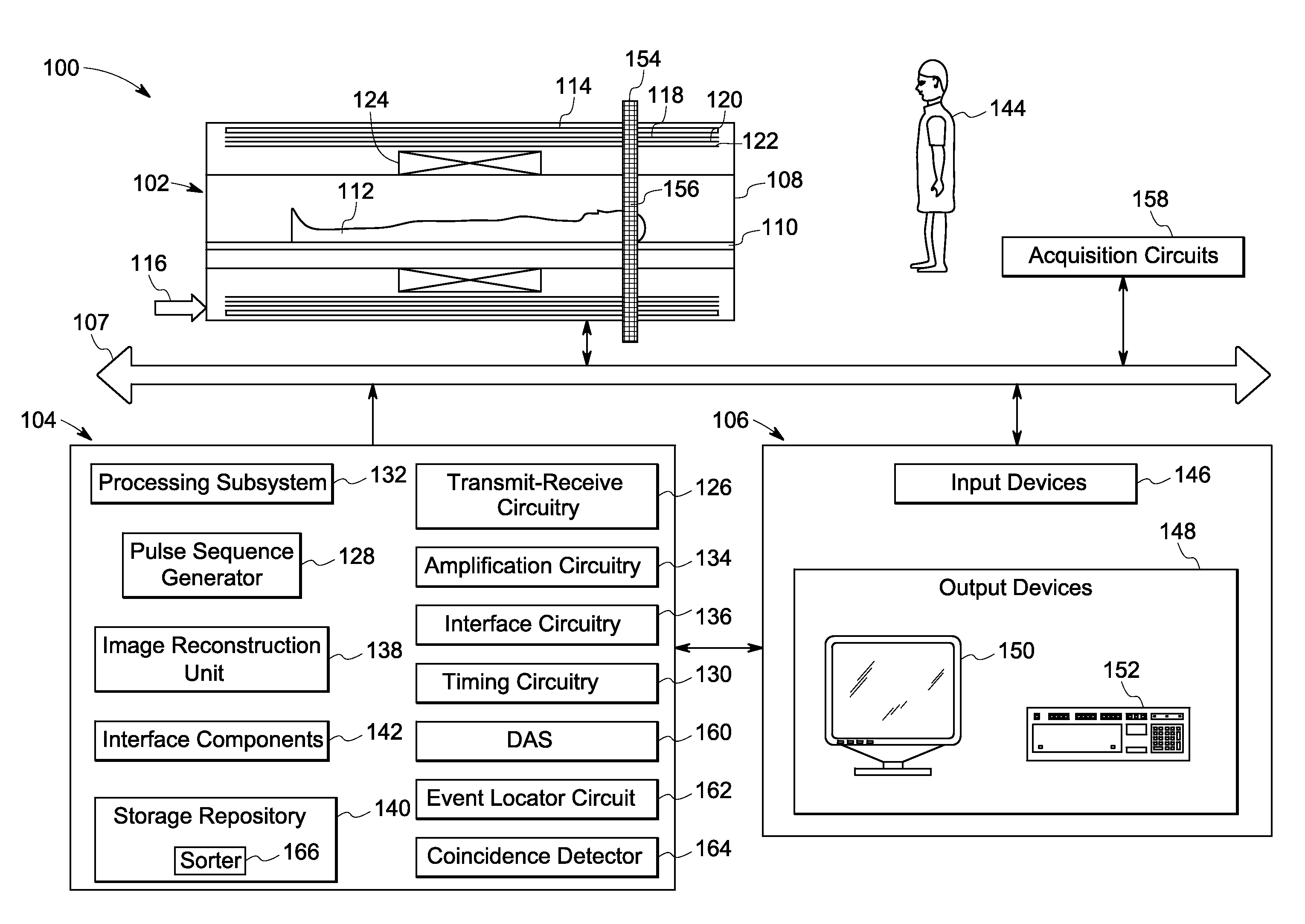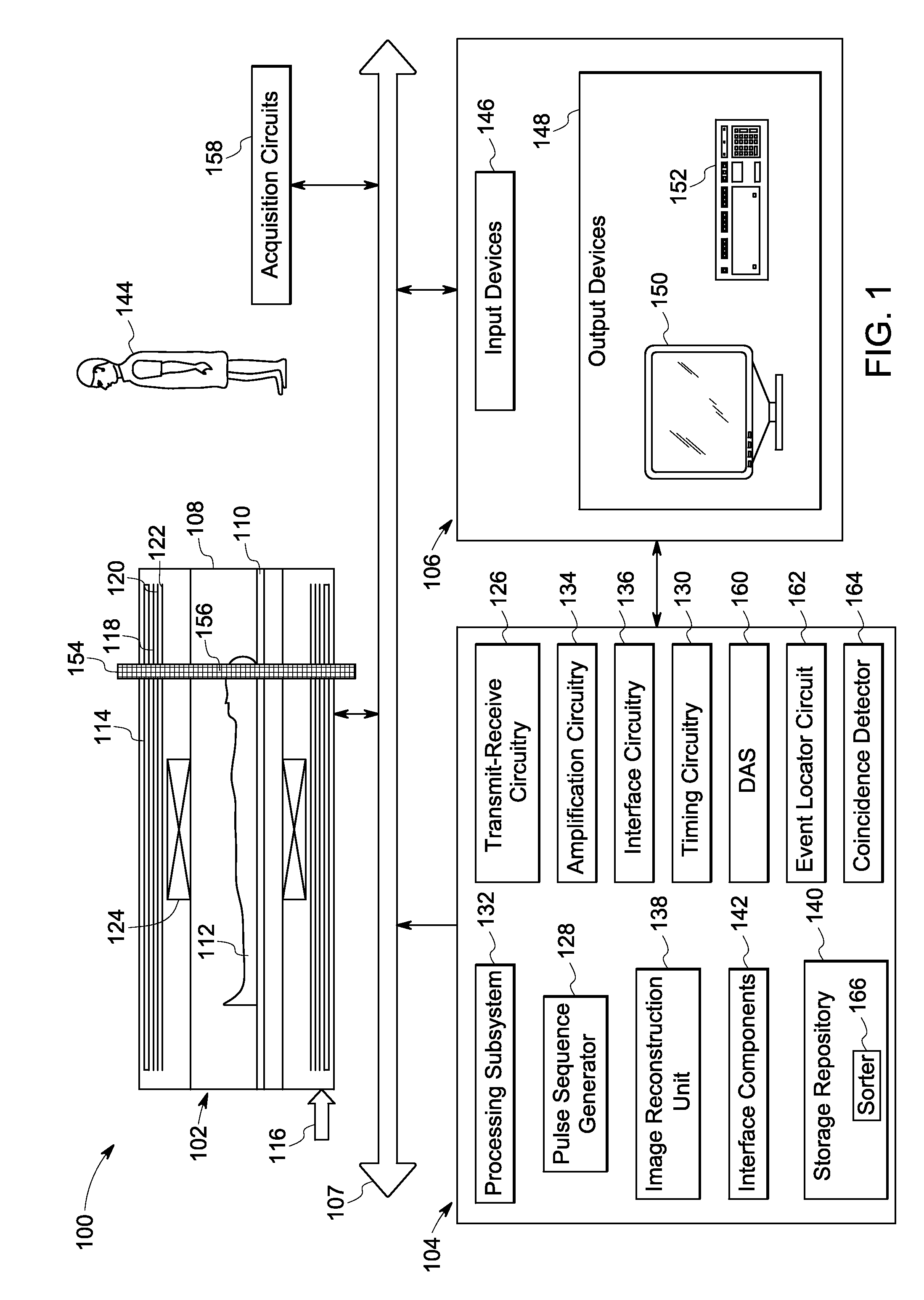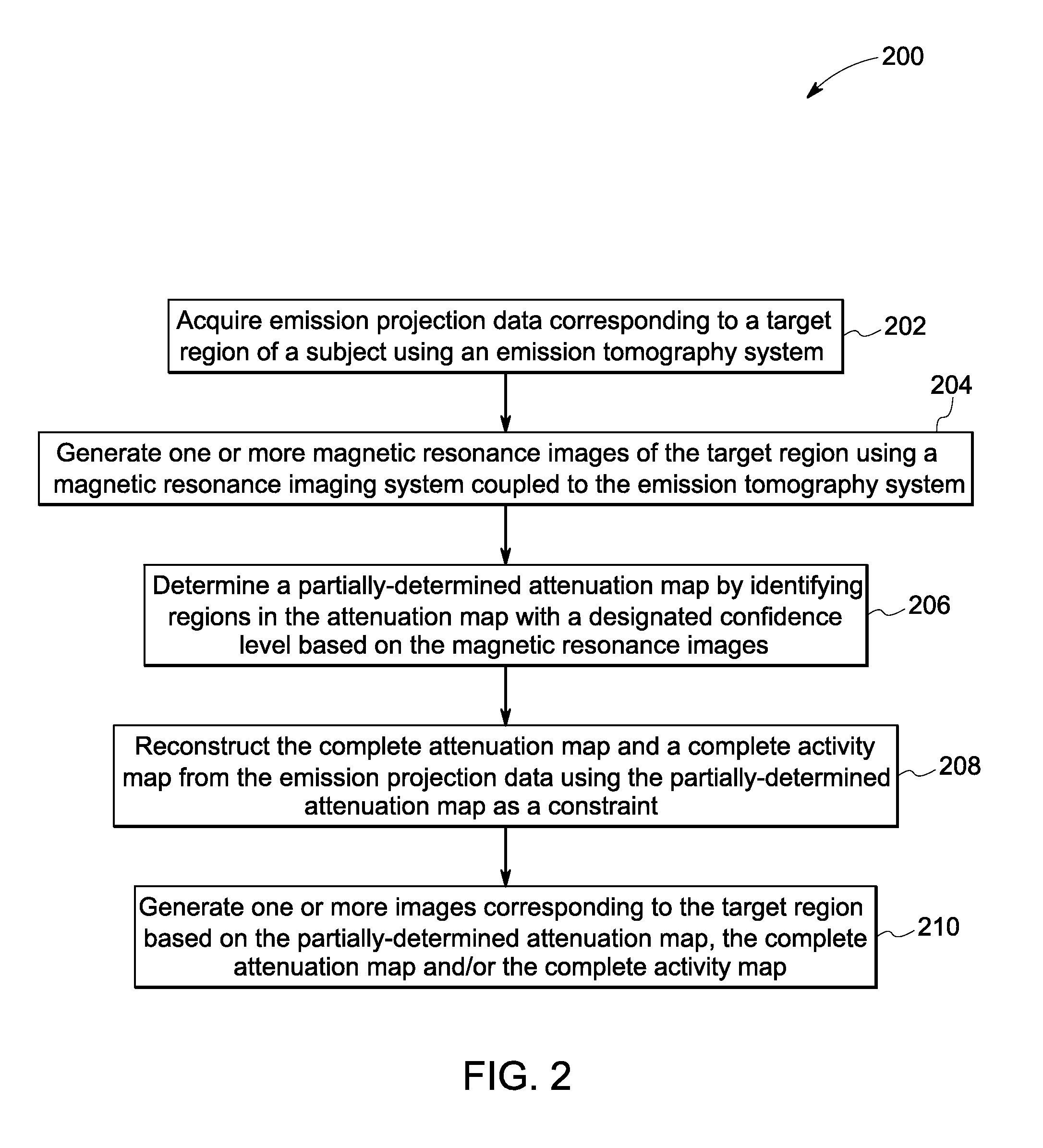Joint estimation of attenuation and activity information using emission data
a technology of activity information and emission data, applied in the field of joint estimation of attenuation and activity information using emission data, can solve the problems of ct imaging having limited soft tissue contrast, deteriorating image quality, and inability to provide a direct transformation of magnetic resonance (mr) images into pet attenuation values
- Summary
- Abstract
- Description
- Claims
- Application Information
AI Technical Summary
Benefits of technology
Problems solved by technology
Method used
Image
Examples
Embodiment Construction
[0018]The following description presents exemplary systems and methods for attenuation correction in nuclear images using MR data. Particularly, embodiments illustrated hereinafter disclose hybrid PET / MRI systems and methods that allow for enhanced PET imaging by simultaneously generating an emission activity map and an attenuation map from emission data and a partially-determined attenuation map.
[0019]Although exemplary embodiments of the present technique are described in the context of correction of PET and / or PET / MR images, the approaches described herein are also applicable to attenuation correction and / or image modification in other modalities, such as single photon emission computed tomography (SPECT). Therefore, while hybrid PET / MR imaging is presently discussed, it should be noted that the disclosed techniques are also applicable to hybrid SPECT / MR, SPECT image modification and / or attenuation correction, and any other imaging modality in which attenuation correction or atte...
PUM
 Login to View More
Login to View More Abstract
Description
Claims
Application Information
 Login to View More
Login to View More - R&D
- Intellectual Property
- Life Sciences
- Materials
- Tech Scout
- Unparalleled Data Quality
- Higher Quality Content
- 60% Fewer Hallucinations
Browse by: Latest US Patents, China's latest patents, Technical Efficacy Thesaurus, Application Domain, Technology Topic, Popular Technical Reports.
© 2025 PatSnap. All rights reserved.Legal|Privacy policy|Modern Slavery Act Transparency Statement|Sitemap|About US| Contact US: help@patsnap.com



